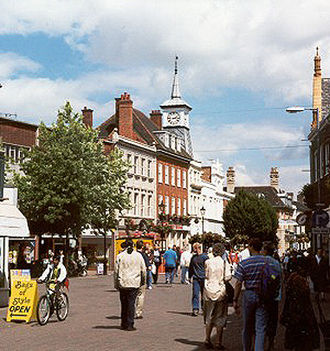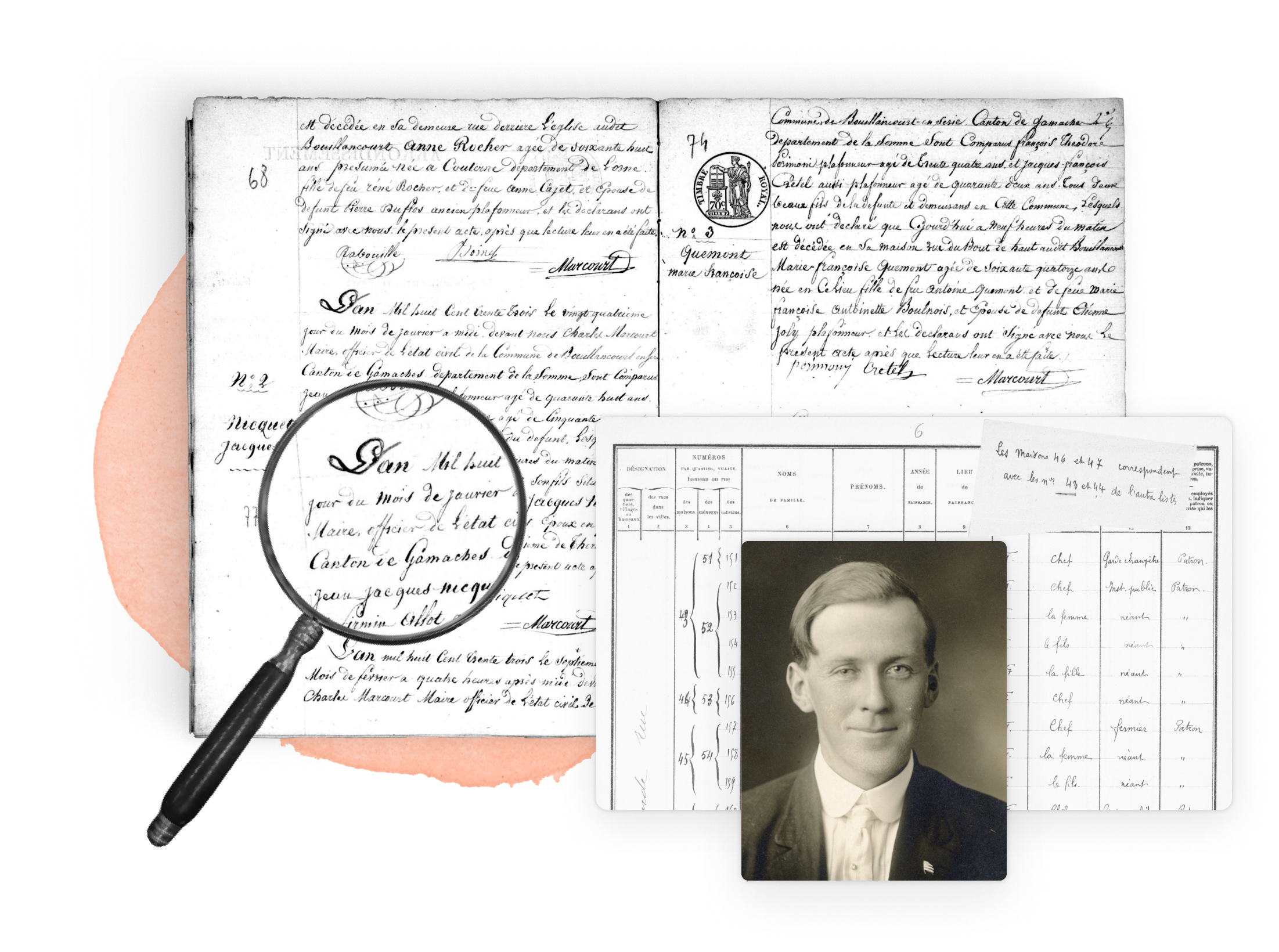
Warwickshire, a ceremonial county situated within the West Midlands region of England, exhibits a diverse geographical profile. It shares borders with Staffordshire and Leicestershire to the north, Northamptonshire to the east, Oxfordshire and Gloucestershire to the south, and Worcestershire and the West Midlands metropolitan county to the west.[1]
While Warwick serves as the county town, Nuneaton holds the distinction of being the largest town within its boundaries. Since 1974, the city of Birmingham, England is part of the West Midlands Metropolitan County, but parts of the city were historically part of Warwickshire, Staffordshire, and Worcestershire. This is because the city has grown to include areas from multiple historic counties.[2] Renowned for its significant historical and cultural contributions, Warwickshire holds a prominent place in English history, most notably as the birthplace of William Shakespeare in Stratford-upon-Avon.
The population of Warwickshire is 607,604 according to mid-2022 population figures published by the Office for National Statistics. Warwickshire's population growth rate between mid-2021 and mid-2022 was 1.4% per year. Warwickshire covers an area of 1,975 square kilometers (763 square miles) and has a population density of 308 people per square kilometer (km2), based on the latest population estimates taken in mid-2022.[3]
According to the latest 2021 census, the population in Warwickshire is predominantly white (89%), with non-white minorities representing the remaining 11% of the population.[3]
Research your ancestors on MyHeritage
Warwickshire: landscape, industry, agriculture, and attractions
Warwickshire boasts a varied landscape encompassing both rural and urban environments.[4] The county is part of the rolling hills of the Cotswold, a huge area of almost 800 square miles and the Cotswold is England's largest Area of Outstanding Natural Beauty.[5]
The coal, clay, and stone found in Nuneaton and Bedworth were key to the development of industry in the area. By the late 19th century, many brickworks, quarries and factories had developed and were transporting the goods they made all over the country via the canal, road and rail networks.[6] These industries in turn attracted workers and their families to this part of Warwickshire. In 2017, Warwickshire was one of the fastest growing economies in England - and the fastest-growing of all local authorities of comparable size.[7] Coventry & Warwickshire is a major center of advanced manufacturing, including automotive, rail, aerospace and motorsport, employing in excess of 40,000.[8]
Since the establishment of the separate metropolitan county of West Midlands in 1974, Warwickshire's economy has largely transitioned towards agriculture. Dairy farming remains a significant sector, while the southwestern region, bordering the fruit-producing Vale of Evesham, is renowned for its orchards and market gardening. While the northern coalfield retains an industrial presence, the county has also witnessed the growth of light industries and residential suburbs, a direct consequence of the expanding manufacturing belt of the West Midlands.[1]
Warwick Castle, built by William the Conqueror and strengthened during the Wars of the Roses and the English Civil Waris famous throughout England. Stratford-upon-Avon is by far the most popular spot for visitors to Warwickshire. The Lord Leycester Hospital, located in Old Town on Warwick High Street consists of a series of magnificent half-timbered medieval buildings that date as far back as 1383. St. Nicholas' Park is a 40-acre public green space. Hill Close Gardens is a network of 16 fully-restored Victorian gardens, with high hedges between the quaint summerhouses, old fruit trees, and heritage flowerbeds. Built in 1443, the Collegiate Church of St. Mary was reconstructed after a 1694 fire with help from Christopher Wren. The Warwickshire Museum promotes the conservation of Warwickshire’s natural and cultural heritage.
Warwickshire history
Evidence suggests human habitation in Warwickshire dates back to the Paleolithic period. Neolithic and Bronze Age settlements followed, leaving behind traces of their existence in the form of archaeological finds.[9] The Warwickshire County council has a website entitled Heritage and Culture Warwickshire, one of the main sections focuses on Archaeology and Ancient Sites. Remains of barrows and stone tools and axes have been found, mostly along the Avon valley. Also, the remains of around twelve iron age hill forts have been found in the Warwickshire area.[10]
The Roman occupation significantly impacted the region, with the construction of roads like Watling Street and the establishment of minor settlements. For the first few decades following the Roman invasion of Britain in AD 43, the Warwickshire area found itself at the frontier of Roman rule. The Watling Street and Fosse Way Roman roads were constructed, and for several decades the Fosse Way marked the western frontier of Roman rule in Britain. The Warwickshire area was heavily fortified during this period and several military settlements were founded to defend the roads. Later on the Ryknild Street was constructed through the Warwickshire area, which passed through what is now Birmingham.[10] In time some of these military settlements grew into civilian towns. The largest Roman settlement in Warwickshire was Aluana (modern day Alcester). Other significant Roman settlements included Tripontium (near Rugby) and Manduessedum. (modern day Mancetter near Atherstone).[11]
Following the Roman withdrawal, Anglo-Saxon tribes, primarily Mercians, settled in Warwickshire. This period saw the rise of local kingdoms and the gradual development of a distinct regional identity.[12]
The medieval era witnessed the construction of prominent castles, such as Warwick and Kenilworth, which played crucial roles in regional power dynamics.
The 16th century, the Elizabethan era, saw the rise of Stratford-upon-Avon, renowned as the birthplace of William Shakespeare. This period also witnessed significant social and economic changes, including the growth of the wool trade.
The 17th century was marked by the English Civil Wars, with the Battle of Edgehill fought near the Oxfordshire border.[10] This battle in Warwickshire is considered the first major clash of the Civil War.[13]
The 18th century and subsequent centuries saw the rise of industrialization, with the development of coal mining and manufacturing centers, particularly around Coventry and Birmingham. Warwickshire saw significant development due to the construction of canals, which transformed the county into a major industrial center, with towns like Birmingham and Coventry becoming hubs for manufacturing and metallurgy, largely facilitated by the coalfields in northern Warwickshire; this growth was further boosted by the later development of railway lines running through the county, connecting it to other major cities.[14]
The 19th century witnessed rapid industrial growth, transforming Warwickshire into a major center for manufacturing and engineering primarily due to the further development of coal mining in the north of the county, which fueled the expansion of nearby cities like Birmingham and Coventry, making Warwickshire a major industrial center in Britain.[1]
The 20th century brought significant social and economic changes, including the impact of two World Wars and the rise of the automobile industry. There was significant growth of industrial towns like Coventry and Nuneaton and the cultural prominence of Stratford-upon-Avon as the birthplace of William Shakespeare.[15]
Warwickshire parishes and unparished areas
There are 219 civil parishes in Warwickshire.[16] There are only three unparished areas in Warwickshire; Bedworth, Nuneaton, and Rugby towns. There are currently two tiers of local government - five smaller district councils covering North Warwickshire, Rugby, Warwick, Stratford-on-Avon and Nuneaton and Bedworth, and one large county-wide authority.
Warwickshire geography
Warwickshire lies in the very center of England and is within easy reach of at least four Areas of Outstanding Natural Beauty. including the Cotswolds a a region known for its rolling hills, quaint villages, and traditional pubs[17] Warwickshire, situated south and east of the West Midlands metropolitan area, exhibits strong interdependencies with neighboring urban centers, including Coventry, Birmingham, and Solihull within the West Midlands region, as well as connections to the South East of England. While population density is concentrated within the county's principal towns, a substantial portion of Warwickshire retains a rural character. Notably, the county occupies a pivotal position within the United Kingdom's transportation infrastructure, traversed by several strategically significant routes.[18]
Warwickshire exhibits a remarkable diversity of rock formations spanning over 600 million years of geological history. From Precambrian volcanic activity to the Pleistocene ice age (culminating only 10,000 years ago), the region has a wide range of lithologies, including hard lavas, sandstones in various hues, limestones (both grey and honey-colored), coal, and softer sediments like silts, clays, and gravels. This diverse rock record reflects a dynamic paleoenvironment, encompassing desert, marine, equatorial, and arctic conditions. The varied lithologies significantly influence the local topography. For instance, harder limestones and ironstones contribute to the formation of elevated features such as Edge Hill in southern Warwickshire. Furthermore, the readily available local rocks have historically shaped the built environment, as evidenced by the construction materials employed in rural cottages and farms.[19]
Researching family history in Warwickshire
The Warwickshire County Council has a local studies and family history collection that has links to libraries with collections.[20] The Midland Ancestors, formerly the Warwickshire Family History Society, has an extensive list of links to family history resources. The Warwickshire Heritage and Culture houses the county record office. The Shakespeare birthplace and trust has the world’s largest publicly accessible library and archive devoted to Shakespeare, the sources of his plays and their history on the stage.[21] Birmingham Archives and Heritage Service collects and preserves both original and printed records of historical significance relating to the City of Birmingham, its people, businesses, institutions and societies.
Ethnicities in Warwickshire
The demographic distribution of the Warwickshire population is as follows:[3]
According to the latest 2021 census, the population in Warwickshire is predominantly white (89.1%), with non-white minorities representing the remaining 10.9% of the population. Asian people were the largest minority group in Warwickshire accounting for 6.3% of the population.8,016 or 1% of the Warwickshire population are black according to the latest 2021 census. In England more broadly the portion of the population that is white is 81%. 10% are Asian and 4% are Black.
Population by race in Warwickshire, 2021 census
- White - 531,674 people or 89.1%
- Asian - 37,321 people or 6.3%
- Mixed - 13,533 people or 2.3%
- Black - 8,016 people or 1.3%
- Other - 6,229 people or 1.0%
Surnames in Warwickshire
Explore more about English Counties
MyHeritage has 425 collections that contain millions of English records that cover a variety of genealogical historical events that can help you find your ancestors. The MyHeritage Knowledge Base contains helpful information about genealogical research. The Legacy Family Tree Webinars website contains more than 2000 valuable genealogical webinars including over 50 webinfiftys about English research.
See also
- Administrative structure of England
- English genealogy
- English immigration
- English emigration
- English archives
- England historical records
- Vital records in England
- Birth records in England
- Death records in England
- Marriage records in England
- Census records in England
- Civil registrations in England
- Church records in England
- Newspaper records in England
- English military records
References
- ↑ 1.0 1.1 1.2 Warwickshire | England, Map, History, & Facts | Britannica
- ↑ Birmingham and the Counties
- ↑ 3.0 3.1 3.2 Warwickshire Demographics | Age, Ethnicity, Religion, Wellbeing
- ↑ Genuki: Warwickshire, Warwickshire
- ↑ About the Cotswolds: Frequently asked questions
- ↑ Working Lives
- ↑ Warwickshire Means Business
- ↑ Key sectors
- ↑ Prehistoric Britain
- ↑ 10.0 10.1 10.2 History of Warwickshire
- ↑ The Romans arrive in Warwickshire
- ↑ Where to Find Anglo-Saxons in Warwickshire
- ↑ The Battlefields Hub → The Civil Wars → The Edgehill Campaign → The Battle of Battle of Edgehill
- ↑ The borough of Warwick: Economic and social history, 1545-1835 | British History Online
- ↑ Economic and Social History: Social History since 1815 | British History Online
- ↑ Warwickshire County Council
- ↑ SLHS: Geography: Warwickshire
- ↑ Warwickshire - The people and the place
- ↑ Geology in Warwickshire | Warwickshire Geological Conservation Group (WGCG)
- ↑ Local studies and family history collection
- ↑ Library & Archives
- ↑ Most Common Surnames in Warwickshire, With Meanings


